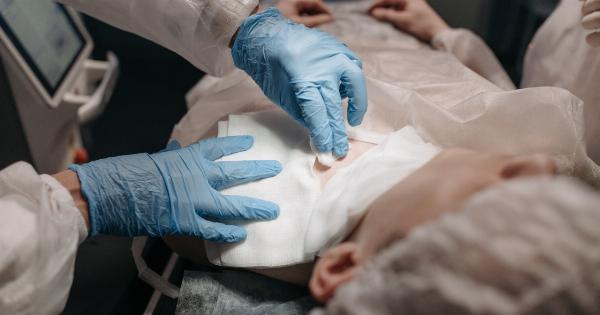The human knee is a remarkable joint that provides stability and mobility. It is composed of various bones, ligaments, tendons, and muscles, all working together to allow us to walk, run, jump, and perform a wide range of movements.
For centuries, scientists and researchers have studied the knee to understand its anatomy and function.
Anatomy of the Knee
The knee joint is formed by the femur (thighbone), tibia (shinbone), and patella (kneecap). The ends of these bones are covered with a smooth layer of cartilage, which enables them to glide against each other with minimal friction.
The two crucial ligaments of the knee are the anterior cruciate ligament (ACL) and the posterior cruciate ligament (PCL), which stabilize the joint and prevent excessive forward or backward movement.
Discovering a Unique Feature
Recent research has uncovered a distinct feature in the human knee that has eluded scientists until now. This discovery pertains to a specialized ligament known as the anterolateral ligament (ALL).
The existence of this ligament has been acknowledged only in the last few years, and it has significant implications for understanding knee biomechanics and injury prevention.
The Anterolateral Ligament
The anterolateral ligament is a band of connective tissue located on the outer side of the knee joint. It originates from the lateral femoral condyle, just above the lateral collateral ligament, and inserts into the tibia below the lateral meniscus.
While not directly involved in knee movements, the ALL provides additional stability and plays a crucial role in preventing rotational forces.
Surgical Implications
The discovery of the anterolateral ligament has had a significant impact on surgical techniques for knee ligament reconstruction.
Previously, ACL injuries were primarily treated by reconstructing the torn ligament alone, but the knowledge of the anterolateral ligament has led to modifications in surgical procedures. Surgeons now recognize the importance of addressing injuries to the ALL to restore knee stability fully.
Biomechanical Influence
The existence of the anterolateral ligament has shed light on the complex biomechanics of the knee joint.
Research has shown that the ALL acts as a checkrein, restraining excessive tibial rotation and preventing the pivot shift phenomenon, which is commonly seen during ACL tears. Understanding the biomechanical influence of the ALL can help improve surgical outcomes and prevent complications post-operatively.
Injury and Prevention
With the discovery of the anterolateral ligament, healthcare professionals and sports researchers are now more aware of the potential causes of knee injuries.
It has been found that insufficient healing or failure to address injuries to the ALL during surgery can lead to prolonged recovery times and an increased risk of future knee instability.
Rehabilitation and Physical Therapy
Physical therapy and rehabilitation play a critical role in the recovery of patients with knee injuries.
The discovery of the anterolateral ligament has prompted therapists to incorporate specific exercises and techniques to target its strength and stability. By focusing on rehabilitating the ALL, patients can regain optimal knee function and reduce the likelihood of reinjury.
Future Research and Implications
The discovery of the anterolateral ligament in the human knee has opened up new avenues of research. Scientists are now exploring the correlation between the ALL and other knee structures to gain a comprehensive understanding of knee biomechanics.
This knowledge could lead to advancements in surgical techniques, rehabilitation protocols, and the prevention of knee injuries in various activities and sports.
Conclusion
The discovery of the anterolateral ligament has revolutionized our understanding of the human knee.
This previously unidentified ligament has significant implications for knee surgery, biomechanics, injury prevention, rehabilitation, and future research. By incorporating the knowledge of this distinct feature, healthcare professionals can enhance patient outcomes and pave the way for further advancements in this field.




























